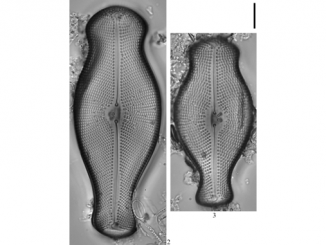
Paper category: Original research paper
Corresponding author: Agnieszka Napiórkowska-Krzebietke (a.napiorkowska-krzebietke@infish.com.pl)
DOI: 10.1515/ohs-2018-0025
Received: November 24, 2017
Accepted: January 15, 2018
Full text: here
Citation (APA style):
Abstract
This study focused on phytoplankton changes in polluted waters of Lake Manzala and the assessment of heavy metal bioaccumulation capacity during the 15-day laboratory experiment. Phytoplankton samples were analyzed every day and the concentration of zinc, iron and lead in water, in phytoplankton and in filtrate – every fifth day of the experiment. Significantly higher phytoplankton abundance was recorded in water from the El-Boom station (basin I) compared to the New Bahr El-Baqar drain (basin II), followed by distinct differences in its composition and chlorophyll content. However, the most abundant species were the same in both basins, i.e. Chroococcus minor, Microcystis aeruginosa, Actinoptychus octonarius, Aulacoseira granulata, Pantocsekiella ocellata, Kirchneriella obesa and Nephrocytium limneticum. Water in basin I was more polluted with heavy metals compared to basin II. Basin I was characterized by the dominance of cyanobacteria and high relative abundance of chlorophytes compared to basin II, where either cyanobacteria and/or diatoms dominated in the phytoplankton. In the former basin, the highest uptake factors (UFs) were recorded for iron and zinc and the lowest UF for lead. In basin II, the highest UF was determined for zinc, but relatively high UFs were recorded also for iron and lead. The presented results suggest that phytoplankton can contribute to natural biosorbents of heavy metals in Egyptian lakes.




Bądź pierwszy, który skomentuje ten wpis